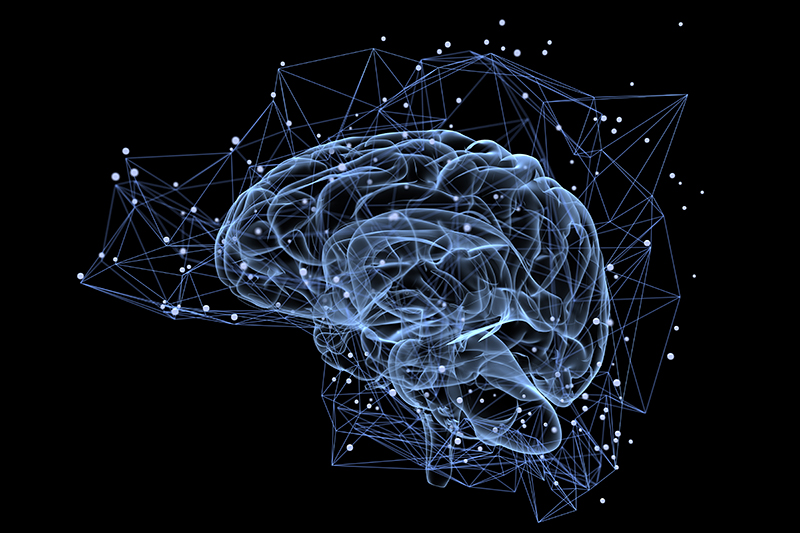
Measuring brain activity with precision is essential to developing further understanding of diseases such as epilepsy and disorders that affect brain function and motor control. Neural probes with high spatial resolution are needed for both recording and stimulating specific functional areas of the brain. Now, researchers from the Graphene Flagship have developed a new device for recording brain activity in high resolution while maintaining excellent signal to noise ratio (SNR). Based on graphene field-effect transistors, the flexible devices open up new possibilities for the development of functional implants and interfaces.
The Graphene Flagship’s Biomedical Technologies Work Package explores the use of graphene and related materials in biomedical implant devices such as neural implants for recording and stimulating electrical activity, and targeted drug delivery. Graphene’s biocompatibility, chemical stability and flexibility – alongside its excellent electrical properties – make it attractive for use in medical devices. “Mechanical compliance is an important requirement for safe neural probes and interfaces,” said Jose Antonio Garrido, who led the research at ICN2. “Currently, the focus is on ultra-soft materials that can adapt conformally to the brain surface.”
The research, published in 2D Materials, was a collaborative effort involving Flagship partners Technical University of Munich (TU Munich; Germany), Institut d’Investigacions Biomèdiques August Pi i Sunyer (IDIBAPS; Spain), Spanish National Research Council (CSIC; Spain), The Biomedical Research Networking Center in Bioengineering, Biomaterials and Nanomedicine (CIBER-BBN; Spain) and the Catalan Institute of Nanoscience and Nanotechnology (ICN2; Spain).
Measuring Brain Activity
The devices were used to record the large signals generated by pre-epileptic activity in rats, as well as the smaller levels of brain activity during sleep and in response to visual light stimulation. These types of activities lead to much smaller electrical signals, and are at the level of typical brain activity. The graphene transistor probes showed excellent performance, with a high SNR and good spatial discrimination of the brain activity.
Neural activity is detected through the electric fields generated when neurons fire. These fields are highly localised, so having ultra-small measuring devices that can be densely packed is important for accurate brain readings. The graphene-based probes are competitive with state-of-the-art platinum electrode arrays and have the benefits of intrinsic signal amplification and a better signal-to-noise performance when scaled down to very small sizes. This will allow for more densely packed and higher resolution probes, vital for precision mapping of brain activity. The inherent amplification property of the transistor also removes the need for a preamplification close to the probe – a requirement for metal electrodes.
Graphene Neural Probes
The neural probes are placed directly on the surface of the brain, so safety is of paramount importance for the development of graphene-based neural implant devices. “Graphene is one of the few materials that allows recording in a transistor configuration and simultaneously complies with all other requirements for neural probes such as flexibility, biocompability and chemical stability.” said Benno Blaschke of TU Munich, first author of the research. Importantly, the researchers determined that the graphene-based probes are non-toxic, and did not induce any significant inflammation. Graphene-containing implants should be long-lasting and safe – key characteristics of long-term therapeutic devices.
An array of 16 graphene-based transistors, each with an active area less than the cross section of a human hair, are arranged on a flexible substrate to form the probe. “Although graphene is ideally suited for flexible electronics, it was a great challenge to transfer our fabrication process from rigid substrates to flexible ones,” said Blaschke. “The next step is to optimize the wafer-scale fabrication process and improve device flexibility and stability.”
Future Implant Technology
This work represents a first step towards the use of graphene in research as well as clinical neural devices, showing that graphene-based technologies can deliver the high resolution and high SNR needed for these applications. “Graphene neural interfaces have shown already a great potential, but we have to improve on the yield and homogeneity of the device production in order to advance towards a real technology,” said Garrido, who is also the Deputy of the Graphene Flagship Biomedical Technologies work package. “Once we have demonstrated the proof of concept in animal studies, the next goal will be to work towards the first human clinical trial with graphene devices during intraoperative mapping of the brain. This means addressing all regulatory issues associated to medical devices such as safety, biocompatibility, etc.”
Devices implanted in the brain as neural prosthesis for therapeutic brain stimulation technologies and interfaces for sensory and motor devices, such as artificial limbs, are an important goal for improving quality of life for patients. Andrea Ferrari, Science and Technology Officer and Chair of the Management Panel of the Graphene Flagship, added “We are pleased to see this promising result from the newly formed work-package on Biomedical Technologies. This was created to exploit the short and long term potential of graphene and related materials in this high growth area, with great potential benefits for society.”
SOURCE: Graphene Flagship




